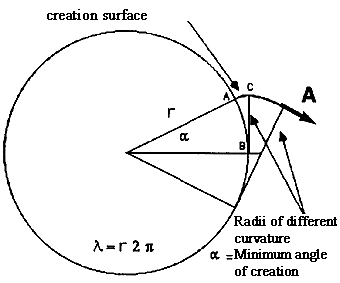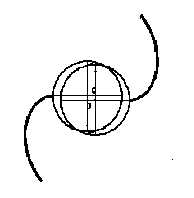The bidimensional model of involute and evolute, that describes on the orbital plane the resonance state of a wave in the scale of the Schild space-time discontinuity, is full of potential innovations and new possibilities. One of the new possibilities of the model leads us to the unexpected but totally rational discovery of a wave statistical mechanism that would make the creation of matter under the form of single elementary particles reasonable and consequent. Let us observe in the wave model of electron the involute on the plane of the resonance orbit. In terms of quantized lengths, the resonance orbit: 2pr0 = l0 is constituted by a definite integer of elementary lenghts L, from which it follows that: nL = 2pr0, and therefore: nL = l0. The resonance orbit is therefore divided into an integer n of elementary lengths L.
The wavefront circulating in a resonance state occupies all the squares composing the quantized physical distance of the resonance orbit. Let us describe what happens on the scale of the space-time quantization when particle and antiparticle, elementary matter and antimatter meet and annihilate each other.
The resonance condition in this single case remains unchanged, because the sum of the two superposed perturbations create nothing but another perturbation. The Positron, which is the antiparticle to electron, has disappeared, and where before there were two particles now there is nothing but one of them. Once the particle-antiparticle meet, it can happen, with a well precise statistical rythm, that 1 time out of n times they do not annihilate reciprocally, but they exactly interpenetrate superposing their respective perturbation fronts and producing a new matter particle. The reason why the result produces a
particle and not an antiparticle is still unknown, and it will be the
object of scientific researchers for the next few years. |

